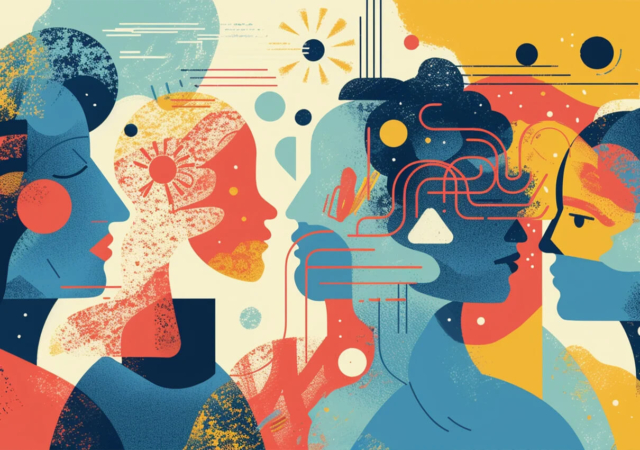Intro to HR shared services: Benefits, Roles and Responsibilities
Intro to HR shared services: Benefits, Roles and Responsibilities
Sep 13, 2024
Last updated on Jul 7, 2025
Picture a huge company with 200,000+ workers spread across 6 different parts. Rather than each entity maintaining its own HR department, a shared services model centralizes HR operations, serving all branches under one cohesive umbrella.

More and more companies are using HR shared services these days. But what exactly is it? HR shared services puts all the HR tasks in one place. It’s like having one big HR team for the whole company, instead of lots of little ones. This way of doing things helps companies work better and save money. Let’s dive in and see how it works and why it’s so helpful.
HR Shared Services (HRSS), also known as HR Service Delivery (HRSD), is a centralized model for managing HR activities. It involves:
- Bringing together various HR functions into a cohesive unit to improve efficiency and service quality.
- Often involves outsourcing to leverage expertise and reduce operational costs.
- Provides foundational support to strategic HR business partners, enabling them to focus on high-impact areas such as talent management and organizational development.
This model aims to streamline HR processes, making them more accessible to employees and allowing the HR department to operate more strategically.
HR shared services structures help HR teams work better and give employees faster, easier access to HR help. Let’s look at the main parts of HR shared services and how they work together.
Centralized hub
At the heart of HR shared services is the centralized hub. Think of it as HR’s main office. This hub handles everyday HR tasks and is where employees and managers go first when they need HR help. The hub deals with things like:
- Answering questions about pay and benefits
- Helping with time off requests
- Updating employee info
- Explaining company policies
Having one central place for these tasks makes things simpler. Employees know exactly where to go for help. It also lets HR work more efficiently. Instead of having HR people spread out doing the same tasks in different departments, they’re all in one place, sharing knowledge and resources.
This setup also helps keep HR services consistent. Whether you work in sales, IT, or manufacturing, you get the same level of HR support. This fairness is key in making employees feel valued.

Tiered service delivery
HR shared services often use a tiered system. This means different levels of support based on how complex the issue is. It’s like a ladder, with each step up handling tougher problems.
- Tier 0 – Self-service: Employees use digital platforms to handle basic HR tasks like checking pay, updating info, and booking leave, promoting independence and efficiency. These self-service tools are available 24/7.
- Tier 1 – Basic support: HR generalists provide personalized assistance for more complex issues, such as benefits navigation and policy inquiries, ensuring clarity and support.
- Tier 2 – Specialist and strategic HR activities: focuses on big-picture HR work that shapes the company’s future. Tier 3 work is done by senior HR leaders. They work closely with company executives to make sure HR strategies line up with business goals.
Supporting technology
Technology is the backbone of HR shared services. Without good tech, the whole system would fall apart. Here’s how technology helps:
- Routine tasks can be done automatically. This frees up HR staff to focus on more important work.
- Tech tools keep track of HR requests, making sure nothing falls through the cracks.
- Smart systems can spot trends in HR data, helping leaders make better decisions.
- Some companies use AI chatbots to answer simple HR questions, even outside of office hours.
The right tech makes HR shared services faster, more accurate, and more helpful to employees.
Service centers
Service centers are where the rubber meets the road in HR shared services. They can be physical offices or virtual setups. Their job is to provide HR support to employees wherever they are.
In big companies, service centers might be spread out geographically. This helps them serve employees in different time zones or countries. Service centers usually handle Tier 0 and some Tier 1 support.
The key to good service centers is having staff who are both knowledgeable and good with people. They need to solve problems efficiently while also making employees feel heard and valued.
Centers of expertise (CoEs)
Centers of Expertise are groups of HR specialists who know a ton about specific HR areas. Think of them as the HR world’s special forces. They focus on things like:
- Figuring out fair pay structures
- Designing health plans and other perks
- Creating training programs to help employees grow
CoEs usually work on Tier 1 and Tier 2 tasks. They’re the go-to people for tough questions and for developing new HR strategies. Their deep knowledge helps the company stay competitive in attracting and keeping good employees.
Business partner model
The Business Partner Model is about connecting HR directly with the company’s leadership. HR business partners are senior HR pros who work side-by-side with executives and department heads. Their job is to:
- Understand the business goals of their assigned area
- Figure out how HR can help achieve those goals
- Advise leaders on people-related issues
- Bring HR expertise to business decisions
Business partners are the bridge between HR and the rest of the company. They make sure HR isn’t just a support function, but a key player in the company’s success.
HR Shared Services centralize HR tasks in one location. They improve HR efficiency and organization. When choosing the right HR outsourcing partner, their services handle essential HR functions that support employees and boost company performance. HR Shared Services typically manage:
- Payroll processing: Managing employee compensation, including wages, bonuses, and deductions
- Benefits administration: Overseeing employee benefits programs such as health insurance, retirement plans, and leave policies
- Employee data management: Maintaining accurate and up-to-date employee records and databases
- Recruitment and onboarding: Streamlining the hiring process from job posting to onboarding new employees
- Performance management: Facilitating performance review processes and career development plans
- Learning and development: Providing training and professional development opportunities for employees
- HR compliance: Ensuring adherence to labor laws and employment regulations
- Employee relations: Addressing employee concerns and fostering a positive work environment
- HR reporting and analytics: Generating reports and insights on HR metrics to inform decision-making

HR shared services are changing how companies handle their people stuff. Let’s look at some of the main HR shared services benefits that make this way of doing HR so helpful for businesses today.
Process consistency
HR shared services make sure all workers are treated fairly. They do this by making HR processes the same for everyone. This helps the company follow its rules better. When HR tasks are done the same way for all employees, it cuts down on mistakes and unfair treatment. This makes workers feel more valued and respected.
Strategic focus
HR shared services free up time for HR pros. They do this by automating boring paperwork tasks. This gives HR teams more time to work on big-picture stuff. They can focus on helping employees grow and planning for the company’s future. Instead of getting bogged down in day-to-day tasks, HR can think about ways to make the whole company better.
Policy compliance
Having one central place for HR makes it easier to spread company rules. When all HR info comes from one spot, it’s clearer for everyone. Workers can easily find and understand company policies. This helps make sure everyone follows the rules. It also makes it simpler for HR to enforce policies fairly across the whole company.
Employee involvement
Centralized HR services put more power in workers’ hands. They can handle their own HR stuff, like updating personal info or requesting time off. This makes employees feel more in control. It also builds trust between workers and the company. When employees can easily access HR info and tools, they feel more connected to the company.
Cost reductions
A central HR hub can cut down on paperwork and admin tasks. This means the company can do more without hiring more people. The HR team can handle more work efficiently. This leads to big savings in time and money. It’s a smart way for companies to keep costs down while still taking good care of their workers.
Operational efficiency
HR shared services get rid of red tape. They give teams more freedom to get things done. This means HR tasks get finished faster. When HR processes are streamlined, it helps the whole company work better. Employees spend less time waiting for HR stuff and more time doing their actual jobs. This boosts productivity across the board.
Setting up HR shared services takes some careful thinking. Company leaders need to figure out what they want to achieve. It’s not just about saving money – it’s about making HR work better for everyone. Talentnet’s HR Shared Service Outsourcing is renowned for its integrated approach, combining a full suite of HR functions with cutting-edge technology to optimize your HR operations. With a focus on precision and compliance, Talentnet shared services model serves as a strategic partner to over 200 companies, ensuring seamless HR management and enhanced employee experience.

Solve your HR problems!
6th Floor, Star Building, 33 Mac Dinh Chi, Saigon Ward, Ho Chi Minh city, Vietnam




